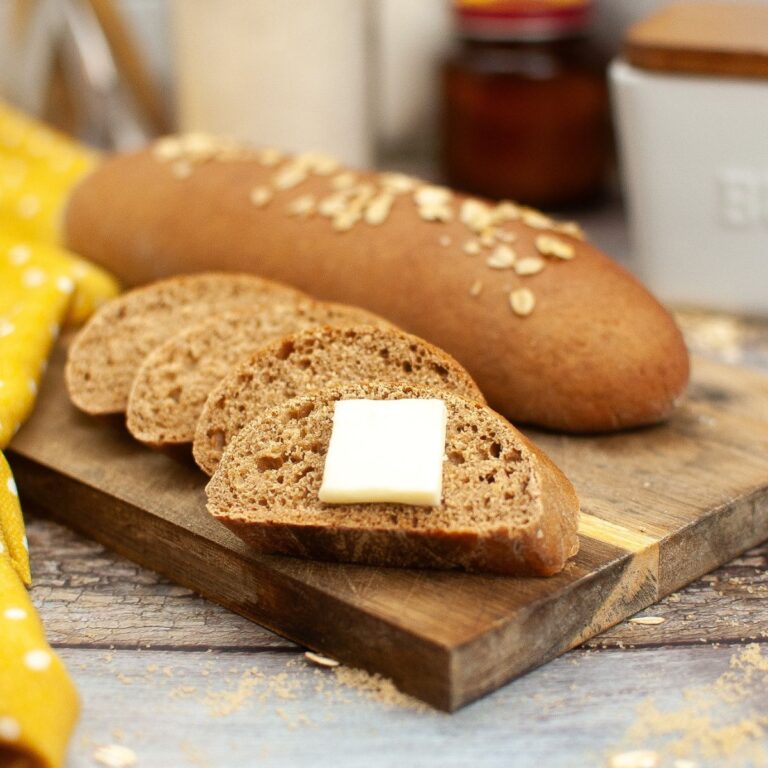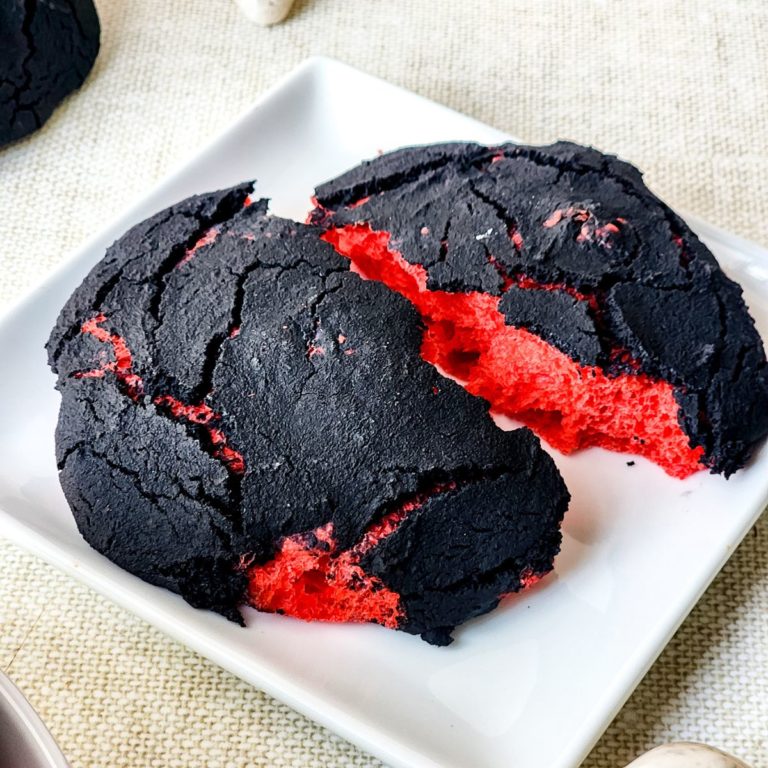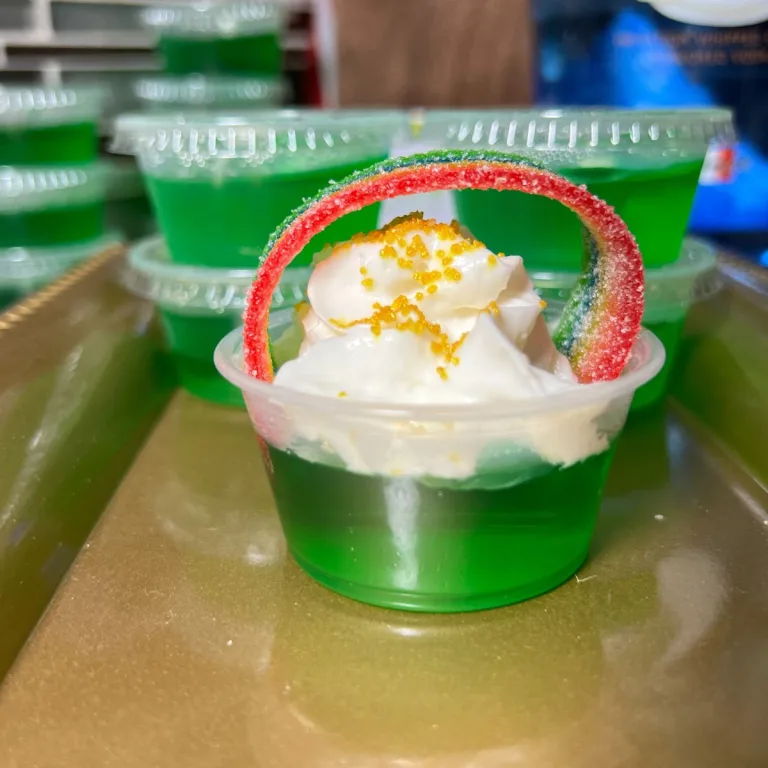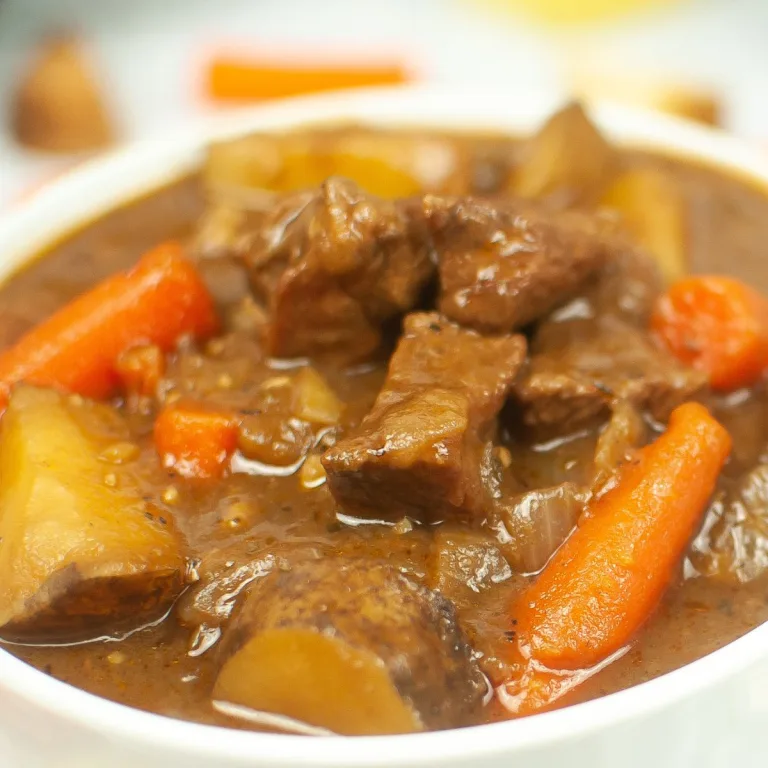Best Irish Soda Bread Recipe
Discover the joys of baking with our quick & easy Irish Soda Bread recipe. Perfect for any occasion, especially St. Patrick’s Day celebration!
Traditional Irish Soda Bread with Corned Beef and Cabbage Dinner
This traditional bread is a staple in Irish baking and is loved for its dense yet soft texture and crusty exterior.
It’s incredibly quick and easy to make! With just a few simple ingredients, you can enjoy a taste of Ireland quick breads in your own kitchen.
Irish Soda Yeast Bread is a must-try for anyone who loves traditional bread recipes and authentic Irish baking.
Whether you’re celebrating St. Patrick’s Day or simply craving a homemade loaf, this recipe is sure to satisfy.
So, grab your apron and let’s get baking!

The History of Simple Irish Soda Bread
Irish Bread has a rich history in Irish cuisine. It originated in Ireland during the 19th century when baking soda became widely available and affordable.
The bread was a staple in Irish households because it could be made with simple ingredients that were easily accessible.
Traditional Irish soda bread did not have any added sugar or eggs and was made with only flour, baking soda, salt, and buttermilk.
We made this Irish Soda bread recipe without buttermilk.
Over the years, variations with added ingredients like sugar, a cup of raisins, and butter became popular.
Today, Irish Soda Bread is still enjoyed as a traditional bread in Ireland and is also popular around the world, especially during St. Patrick’s day celebration.

The Importance of Buttermilk in Irish Soda Bread
Buttermilk plays a crucial role in creating the signature texture and flavor of Irish Soda Bread.
In traditional Irish soda bread recipes, buttermilk is used instead of regular milk because of its unique properties.
Buttermilk reacts with the baking soda to provide the bread’s leavening, resulting in a light and tender texture. It also adds a tangy flavor that complements the bread’s taste.
The combination of baking soda and buttermilk creates a chemical reaction that helps the bread rise without the need for yeast.
This leavening process gives Irish Soda Bread its distinctive flavor and texture.
Without buttermilk, the bread would be denser and lacking the characteristic tanginess.
In addition to its leavening properties, buttermilk was commonly used in traditional bread recipes because it was more readily available in rural areas of Ireland.
Its acidity contributes to the characteristic texture and taste of the bread.
Why Buttermilk?
The acidity in buttermilk helps activate the baking soda, producing carbon dioxide gas that expands the dough.
This reaction creates bubbles in the bread, resulting in a light and airy texture.
- Buttermilk provides moisture to the dough, keeping it tender and preventing it from becoming dry.
- The tangy flavor of buttermilk adds a pleasant contrast to the slightly sweet and nutty taste of the bread.
- Buttermilk helps enhance the shelf life of Irish Soda Bread, allowing it to stay fresh for longer.
Overall, buttermilk is a key ingredient in Irish Soda Bread. Its unique properties contribute to the bread’s texture, flavor, and leavening process.
Whether you’re making traditional Irish soda bread or adding your own twist, buttermilk is a crucial component that shouldn’t be overlooked.
Gather Your Ingredients:
- Love and laughter (non-negotiable!) 😄💖
- Milk (your choice, dairy or non-dairy will do!)
- White vinegar (for that perfect tang)
- Gluten-free all-purpose flour (your favorite blend)
- Xanthan gum (skip this dance if your flour’s got groove)
- Baking powder (for that glorious rise)
- Baking soda (fluffiness, here we come!)
- Sea salt (just a pinch of ocean breeze)
- Unsalted butter, cold (cut into tiny cubes of joy)
- Honey (liquid gold, baby!)
- Egg, whisked (it’s the whisker’s moment to shine 🥚)
- Butter, melted (because more butter, more better!)
For exact measurements, please see the printable recipe card below.

Step-by-Step Dance to Bread Heaven:
Heat It Up: Crank that oven to 375 degrees F, the warm heart of your kitchen. 🌡️
Parchment Lane: Prep your prepared sheet baking runway with a sheet of parchment paper. 🛤️
Sour It Sweet: Mix milk and white vinegar, and give them five to mingle and sour up. 🥛+🍶=❤️
Dry Swirl: Into the bowl goes your dry ingredients; flour mixture —gluten-free flour, optional xanthan gum, baking powder, baking soda, and a sprinkle of sea salt. Whisk it up like you’re stirring good vibes into your day. 😌
Butter Ballet: Now bring in the cold butter, slice, dice, and dance it through the flour with a pastry cutter or your fingers until the mix looks like happy little crumbs. ❄️
Wet Whirl: Pour in the soured milk, drizzle the honey, and add the whisked egg to the party. Stir it into a jolly affair until just united. 🥛
Knead ‘n’ Shape: With a sprinkle of love and a well-floured surface (and flour if needed), shape your dough into a cheery round shape ball (or round loaf) on the parchment paper. 🍞

Bake Marker: Score top of dough a deep cross or big ol’ X (it’s treasure, after all), then blush its cheeks with some melted butter. ☓

Golden Times: Into the oven it goes for a 45-55 minute bake – or until it turns into a golden ambassador of deliciousness. 🔥

Patience, Grasshopper: All great things, like cooling bread and building anticipation, take time. Give it a rest before slicing into that crispy-soft goodness. 🚫✂️
Kitchen Equipment
- Large pot
- Slow Cooker
- Sharp knife
- Small bowl
- Large mixing bowl
- Instant pot
- Food processor
- Cake pan
- Wooden spoon
- Cookie sheet
- Dutch oven
- Large bowl
Remember:
Every flour is its own little snowflake ❄️. If it’s too dry, show it some love with a bit more milk. If it’s too wet, a sprinkle of flour will do the trick. You’ve got this!
Tips for Making Perfect Irish Soda Bread Easy
Here are some tips to ensure that your bread turns out perfectly.
- When cutting cold butter into the flour, use a pastry cutter, fork, or your hands and work quickly to prevent the butter from melting.
- Scoring the dough with an “X” before baking allows the center to bake evenly.
- You can bake Irish Bread on a baking sheet, in a baking pan, or in a cast iron skillet.
- Using a cast iron skillet will give the bread a crispy crust.
- Experiment with different baking options to find your preferred method.
- Remember to preheat the oven and check for doneness using a toothpick or instant-read thermometer.
By following these tips, you’ll be able to create a perfect loaf every time, with a delicious crust and tender center.
More St. Patrick’s Day Recipes
- Best Irish Beef Stew Recipe
- St Patricks Day Bundt Cake Recipe
- Lime Cake Mix Cookies Recipe
- Crockpot Corned Beef and Cabbage Recipe
Printable Recipe Card
Irish Soda Bread Recipe

Discover the joys of baking with our quick & easy Irish Soda Bread recipe. Perfect for any occasion, especially St. Patrick's Day celebration!
Ingredients
- 1 cup whole milk
- 1 tablespoon white vinegar
- 3 cups certified gluten-free all-purpose flour
- 1 teaspoon xanthan gum (omit if flour blend contains it)
- 1 tablespoon baking powder
- 1 teaspoon baking soda
- ½ teaspoon sea salt
- ½ cup unsalted butter, cold
- ¼ cup honey
- 1 large egg, whisked
- 1 tablespoon butter, melted
Instructions
- Preheat oven to 375 degrees F. Line a baking sheet with parchment paper and set aside.
- Add whole milk and white vinegar to a small bowl, and stir to combine. Allow the mixture to sit for 5 minutes while preparing the next steps.
- In a large mixing bowl, add gluten-free flour, xanthan gum (if required), baking powder, baking soda and salt. Whisk to combine.
- Slice the stick of butter down the center lengthwise, then cut into chunks.
- Cut the butter into the flour mixture using a pastry cutter.
- Add the milk mixture, whisked egg and honey to the mixing bowl. Stir until incorporated.
- Using clean hands, work the dough into a ball.
- Place the dough ball onto the prepared baking sheet. Cut an X in the top center of the loaf.
- Brush melted butter over the surface of the dough ball.
- Bake in preheated oven for 45-55 minutes or until golden brown. Allow the bread to cool completely before slicing and serving.
Notes
- All gluten-free flour blends absorb moisture a little differently. If you are working the dough into a ball and find that it is too dry, add a little extra milk. If it is too wet, add a little extra to flour until desired consistency is reached.
Nutrition Information
Yield
8Serving Size
1Amount Per Serving Calories 347Total Fat 15gSaturated Fat 9gTrans Fat 0gUnsaturated Fat 5gCholesterol 61mgSodium 509mgCarbohydrates 47gFiber 1gSugar 10gProtein 7g
FAQs
What makes Irish soda bread different?
Irish soda bread stands out for its unique simplicity and distinct flavor profile. Unlike traditional bread, which relies on yeast for leavening, Irish soda bread uses baking soda and buttermilk to rise, giving it a dense yet tender texture.
Why is Irish soda bread so dry?
Irish brown bread can sometimes be dry if it’s overbaked or if the ratio of ingredients isn’t quite right. The texture can vary depending on the type of flour used, the amount of liquid added, and how it’s kneaded and baked.
If it turns out dry, it could be due to too much flour or too little liquid. Overmixing the dough can also result in a tougher, drier bread. Additionally, baking it for too long or at too high a temperature can lead to dryness. Experimenting with different recipes or adjusting baking times and temperatures might help you achieve the desired texture.
How do you know when soda bread is done?
You’ll know brown Irish soda bread is done when its crust turns a golden brown hue, and tapping the bottom produces a hollow sound, indicating a fully baked interior. Alternatively, test its readiness by inserting a skewer into the center; if it comes out clean, your soda bread is ready to be enjoyed.
Variations of Saint Patrick’s Day Irish Bread
While traditional Irish Soda Bread is made with simple ingredients, there are several variations that you can try to add your own personal touch.
Here are some ideas to enhance the flavor and texture of your Irish Soda Bread:
Adding Raisins
One popular variation is adding raisins to the dough. This not only adds a touch of sweetness but also provides a delightful texture to your bread. Simply mix a handful of raisins into the dough before baking, and you’ll have a delicious twist on the classic.
Using Different Flours
Another way to experiment is by using different types of flour. You can try substituting part of the all-purpose flour with whole wheat flour for a heartier and more nutritious bread. Alternatively, you can mix in a little wheat germ to add a nutty flavor and boost the fiber content.
Feel free to get creative and use a combination of flours based on your preferences and dietary needs.
Just remember to adjust the amount of liquid accordingly, as different flours absorb different amounts of moisture.
Serving Suggestions
Irish Soda Bread is a versatile bread that can be enjoyed in various ways. Perfect for serving with a fork tender corned beef and cabbage meal. Its hearty texture and subtle sweetness make it a perfect accompaniment to savory dishes.
Here are some serving suggestions to enhance your Irish Soda Bread experience:
- Pair with savory dishes: It complements savory stews, soups, and hearty meals. Its dense and crusty exterior pairs well with the rich flavors of dishes like traditional corned beef brisket, Irish beef stew or Guinness lamb stew. The bread soaks up the flavorful broth and adds a satisfying texture to each bite.
- Enjoy it on its own: It is delicious enough to be enjoyed on its own. Whether it’s fresh out of the oven or at room temperature, this bread is delightful when slathered with butter, jam, or honey. The combination of the bread’s subtle sweetness and the creamy, smooth toppings creates a burst of flavors.
- Get creative with toppings: For a savory twist, experiment with different toppings. Try spreading cream cheese and smoked salmon for a classic combination, or avocado slices with a sprinkle of sea salt for a fresh and creamy option. You can also add a variety of cheeses or even a dollop of pesto for an extra burst of flavor.
It can be enjoyed warm, at room temperature, or toasted according to your preference.
Toasting the bread adds an extra crunch to the crust while keeping the inside soft and tender.
Regardless of how you choose to serve it, It is a versatile and delicious addition to any meal.
Freezing and Storing Irish Soda Bread
If you have leftover bread or want to make it ahead of time, you can freeze it for future use.
Allow the bread to cool completely, then wrap it tightly in aluminum foil or place it in an airtight container. It can be stored in the freezer for up to 3 months.
When ready to enjoy, thaw the bread in the refrigerator or at room temperature, then reheat as desired.
If stored properly, it can stay fresh at room temperature for up to 2 days or in the refrigerator for up to 1 week.
Remember to wrap it tightly to maintain its texture and prevent it from drying out.
The Significance of Irish Soda Bread in St. Patrick’s Day Celebration
Irish Soda Bread holds a special place in St. Patrick’s Day celebrations. It is considered a symbol of Irish culture and tradition. Many families in Ireland and around the world bake Irish Soda Bread to commemorate St. Patrick’s Day, which is celebrated on March 17th.
It is a time to honor Irish heritage and customs, and food plays a significant role in these celebrations.
Irish Bread is often enjoyed alongside other traditional Irish dishes, such as corned beef and cabbage for a good ole’ Irish feast.
It brings people together and connects them to their Irish roots, creating a sense of pride and belonging.
Homemade Bread vs. Store-Bought Options
Making homemade bread allows you to control the ingredients and customize the flavor to your liking.
It is a rewarding experience that results in a fresh loaf of bread with a homemade touch.
Store-bought options may be convenient, but they often lack the same level of freshness and flavor.
Homemade Bread has a unique taste and texture that is hard to replicate with store-bought versions.
By making it from scratch, you can ensure that you are using high-quality ingredients and enjoying a truly authentic Irish culinary experience.
Conclusion
Irish Soda Bread is a beloved traditional delicious quick bread that captures the essence of Irish baking.
Mary Berry Soda bread recipe is a dense yet soft texture, coupled with its crusty exterior, creates a delightful sensory experience.
So, grab your apron, gather your ingredients, and embark on a culinary journey that celebrates the warmth and comfort of traditional Irish baking.
Follow us on Pinterest and PIN IT FOR LATER!







